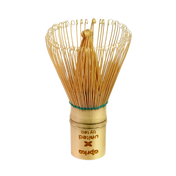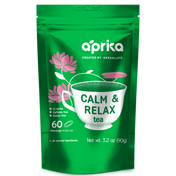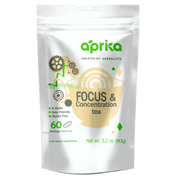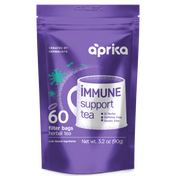Herbal teas are far more than just a comforting drink at the end of a long day; they've been used for centuries as remedies rooted in nature. Whether you're seeking a calmer mind, deeper sleep, sore throats, or better digestive health, there's likely a blend of herbs that can help. But the real appeal lies not just in the herbs themselves but in how you brew them. To get the most out of them, how you brew your tea matters just as much as what goes into it.
Unlike regular tea, herbal infusions often need different water temperatures or longer steep times to extract their active compounds properly. A quickly made brew might still taste fine, but it won't deliver the same results. In this blog, we'll explore the right way to brew herbal teas so that you get both full flavor and the intended benefits from every cup.
A Beginner's Guide to Herbal Teas and Infusions
As the world around us becomes increasingly focused on wellness and natural remedies, you may have noticed more people bringing herbal teas and infusions into their daily routines. Whether it's for better sleep, improved digestion, or simply to reduce caffeine intake, herbal teas have gained steady popularity for their gentle, plant-based benefits. Herbal teas, or herbal blends, are made by steeping various parts of plants, such as leaves, flowers, roots, seeds, or bark, in hot water. Unlike traditional tea, which comes from the Camellia sinensis plant, herbal teas contain no actual tea leaves and are usually caffeine-free. These blends have been used for centuries in many cultures, not just for their flavors but also for their role in traditional healing systems. Each herb brings its unique qualities, some calming, some refreshing, and some warming or cooling. When brewed properly, herbal teas can offer both comfort and support that feels simple and natural.
Brewing Herbal Tea: Small Steps That Make a Big Difference
Brewing herbal tea properly is about making sure you extract the full range of beneficial compounds that the herbs have to offer. While it may seem as simple as pouring hot water over dried leaves or flowers, herbal teas often need a different process than traditional black or green teas. From water temperature and steeping time to the type of herb and how it's stored, several small details can make a big difference in both flavor and effectiveness. Here is how we suggest brewing your herbal teas.
Start With Quality Herbs
- Use loose-leaf teas or premium-quality tea bags for a better flavor and a higher concentration of active compounds.
- Look for herbs that are aromatic, vibrant in color, and stored well. They should not smell stale or musty.
- If using fresh herbs, wash and gently bruise them to help release oils before steeping.
Measure the Right Amount
- A standard ratio is one teaspoon of dried herbs (or one tablespoon of fresh herbs) per 1 cup (240 ml) of water.
- For a stronger brew (especially for medicinal purposes), increase the amount of herbs or extend the steeping time; don't just add more water.
Use Fresh, Clean Water
- Filtered or spring water is ideal.
- Avoid heavily chlorinated tap water (which can interfere with flavor and extraction).
Heat the Water Properly
- Bring water to a full boil (95–100°C / 203–212°F) for most herbal teas.
- Delicate herbs (like chamomile or lemon balm) still do fine with warm water, but boiling water is generally safe for most tea types, like roots, leaves, flowers, and bark.
Combine and Cover
- Pour the hot water over the herbs in a mug, teapot, or heatproof jar.
- Cover immediately; this traps oils and medicinal compounds that would otherwise escape as steam.
Steep for the Right Amount of Time
One of the most important steps in brewing an herbal tea blend is allowing it to steep for the correct amount of time. Unlike regular types of tea, herbal infusions often require a longer steep to draw out their full flavor and health benefits. The ideal steeping time depends on the type of herb you're using. Delicate herbs like chamomile or hibiscus usually need 5 to 10 minutes, while tougher ingredients such as roots like ginger or turmeric, seeds like fennel, or bark like cinnamon benefit from 15 to 30 minutes, or even light simmering on the stove.
Understanding Herbal Tea Preparation Methods
When it comes to preparing herbal teas, different herbs respond best to different brewing techniques, and using the right one can significantly impact how effective and flavorful your tea turns out.
Infusion (Steeping)
This is the most common method for brewing leaves, flowers, and soft plant parts like chamomile, peppermint, or lemon balm. Always cover your cup or teapot while steeping to preserve the delicate flavors and oils from escaping.
Decoction
Used for roots, bark, and tougher plant materials like ginger, cinnamon, turmeric, or licorice root. Simmer the herbs in water over low heat for 15–30 minutes to properly extract their compounds. Always start with cold water and bring it to a slow simmer; don't rush it with high heat.
Cold Infusion (Cold Brew)
A softer method is ideal for heat-sensitive herbs or when you prefer a smoother, more subtle flavor. Combine herbs and cold water in a covered jar or bottle. Refrigerate and steep for 6–12 hours, then strain. Cold brews are especially refreshing in warmer weather and can be a good caffeine-free alternative to iced tea.
Overnight Steep
Used when you want to extract minerals or maximize nutritional content, especially from leaves and seeds. Add herbs to water, cover, and leave at room temperature or in the fridge for 8–12 hours. Rewarm slightly the next day, or drink at room temperature.
Smart Ways to Store Herbal Teas and Preserve Quality
To keep your herbal teas fresh and effective for as long as possible, proper storage is essential. Exposure to direct sunlight, moisture, air, and heat can break down the delicate ingredients in herbs, reducing their antioxidant content and dulling their bold flavors over time. Always store dried herbal teas in airtight containers and keep them in a cool, dry place away from sunlight or heat sources like stoves and windows. Avoid plastic bags or clear jars left on open shelves, as light and air can quickly degrade the quality of your tea. When stored correctly, most herbal blends retain their aroma, potency, and flavor for up to a year, giving you a wide range of benefits every time you brew a cup.








